Designed to use one-third the electricity of traditional residential electric water heaters, new product ensures dependable, efficient hot-water delivery. Noritz America, a leader in tankless water heaters and high-efficiency combination boilers, recently previewed its new, ENERGY STAR-certified Hybrid Electric Heat Pump Water Heater for residential domestic hot water applications. Making its debut in Chicago at Read more
heat pumps
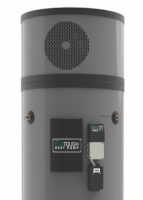
Designed to use one-third the electricity of traditional residential electric water heaters, new product ensures dependable, efficient hot-water delivery.
Noritz America, a leader in tankless water heaters and high-efficiency combination boilers, recently previewed its new, ENERGY STAR-certified Hybrid Electric Heat Pump Water Heater for residential domestic hot water applications.
Making its debut in Chicago at the 2024 AHR Expo in January, this newest addition to the Noritz offering consumes up to one-third of the electricity required by a standard residential electric water heater with a resistive element, yet maintains the same level of hot-water delivery. The “hybrid” designation denotes the inclusion of dual 4.5-kilowatt electric elements positioned at the top and bottom of the tank to provide backup water heating or accelerate recovery times when necessary.
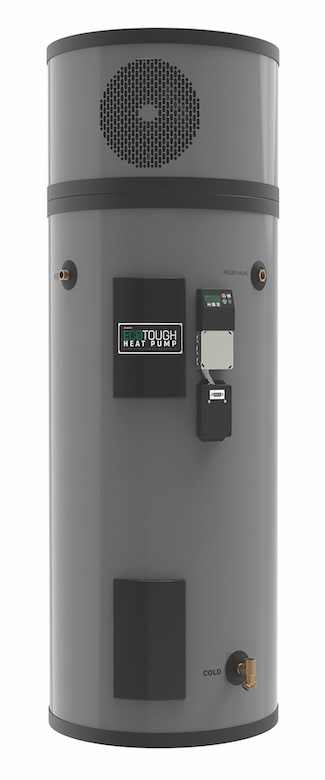 Set for an official launch on July 1, the new Hybrid Electric Heat Pump unit efficiently transfers heat from air to water, resulting in substantial energy savings for consumers seeking to reduce their utility bills. The Hybrid Electric Heat Pump is eligible for government rebates of up to $3,000, the kind of incentive that has made heat pump installations so attractive for both contractors and homeowners.
Set for an official launch on July 1, the new Hybrid Electric Heat Pump unit efficiently transfers heat from air to water, resulting in substantial energy savings for consumers seeking to reduce their utility bills. The Hybrid Electric Heat Pump is eligible for government rebates of up to $3,000, the kind of incentive that has made heat pump installations so attractive for both contractors and homeowners.
Handling hot water temperatures ranging from 50°F to 160°F, the product will be available in four sizes, with the model numbers here indicating the gallon storage volumes: (NHP50, NHP65, NHP80, and NHP120). The 120-gallon model, still a rarity in today’s market, is available by special order. UEF (Uniform Energy Factor) ratings range up to 3.48, highlighting its energy efficiency when compared to similar products in the market.
“At Noritz, our dedication to providing our customers with diverse water heating solutions drives our innovation,” explains Jason Fleming, Executive Vice President and General Manager of Noritz America. “The introduction of the Hybrid Electric Heat Pump not only addresses recent market and regulatory shifts nationwide, but also offers a product designed to save energy, lower maintenance and operating expenses for customers, and streamline installations and servicing for contractors.”
Key Features
- Cement lining: The specially formulated cement lining of the unit’s storage tank is designed to prevent the corrosive effects of hot water. By negating the need for a sacrificial anode rod, the lining all but eliminates maintenance requirements and the necessity for regular checks. (Neglecting to replace the anode rod can lead to premature tank failure in a conventional electric water heater.)
- Five operating modes: The Hybrid Electric Heat Pump offers users five different ways to operate the unit, depending upon user demand and current conditions: hybrid (standard), electric only, heat pump only, super (for high-demand situations), and vacation.
- First Hour Rating: The Hybrid Electric Heat Pump Water Heater’s first hour ratings are 58 gallons (NHP50), 70 gallons (NHP65), 86 gallons (NHP80), and 105 (NHP120).
- High-pressure rating: The unit has a pressure rating of 150 pounds per square inch (psi) WP and 300 psi TP. A temperature and pressure relief valve comes with the unit, pre-installed.
- Warranties: The cement-lined tank and all parts are covered by ten years of protection, plus a one-year warranty on reasonable labor.
- Approvals include AHRI, UL1995, CSA 22.2 No. 236, Low Lead.
For more information on the new Hybrid Electric Heat Pump Water Heater, visit: https://noritz.com/heatpump/
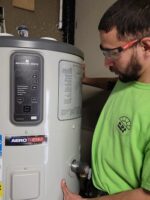
Bradford White Corporation, an industry-leading American manufacturer of water heaters, boilers and storage tanks, is continuing its commitment to support training the workforce of the future by providing strategic in-kind grant funding to the Center for Employment Training (CET), a national nonprofit technical training school. The grant, which stems from Bradford White’s signature charitable giving Read more
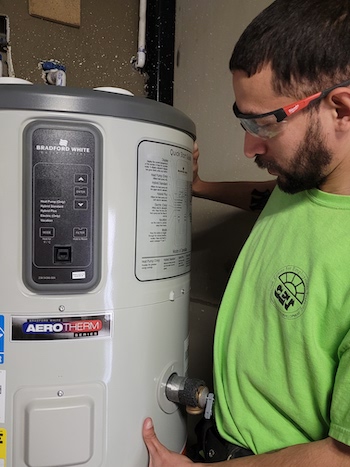 Bradford White Corporation, an industry-leading American manufacturer of water heaters, boilers and storage tanks, is continuing its commitment to support training the workforce of the future by providing strategic in-kind grant funding to the Center for Employment Training (CET), a national nonprofit technical training school.
Bradford White Corporation, an industry-leading American manufacturer of water heaters, boilers and storage tanks, is continuing its commitment to support training the workforce of the future by providing strategic in-kind grant funding to the Center for Employment Training (CET), a national nonprofit technical training school.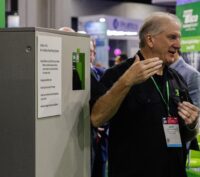
Greetings everyone out there in Radio-land, and welcome to our show, Everything You Always Wanted to Know About Air-To-Water Heat Pumps* (*but were afraid to ask). Our hosts John Barba, Director, Sales Training NA, Taco, and Dave Holdorf, Product & Application Instructor – East, Taco, both of whom have a face for radio, are here Read more
Greetings everyone out there in Radio-land, and welcome to our show, Everything You Always Wanted to Know About Air-To-Water Heat Pumps* (*but were afraid to ask).
Our hosts John Barba, Director, Sales Training NA, Taco, and Dave Holdorf, Product & Application Instructor – East, Taco, both of whom have a face for radio, are here to take your questions and, if a miracle occurs, provide you with coherent answers.
And now, here are your hosts, direct via satellite from Cranston, Rhode Island – John and Dave!
John: Thank you everybody, and welcome to our show. I’m John and on the other microphone is Dave. Say hello, Dave.
Dave: Hello Dave.
John: Yep, those 11 semesters at the Connecticut School of Broadcasting are really paying off, aren’t they? Let’s get right to your calls and tackle some questions on Air to Water Heat Pumps. Dave, who’s our first caller?
Dave: First up JB, we have Elliot from Kansas City. Elliot, you’re up. What’s your question?
Caller: Hi, this is Elliot from Kansas City. Am I on?
John: Hi Elliot, you’re live, coast to coast. There are literally tens of people waiting on your question.
Caller: Wow. Tens, huh?
Dave: Okay, maybe dozens. So . . . what’s cookin’ Elliot?
Caller: Well, it’s pretty basic, but – how many BTU’s? What size house can I do with an air to water heat pump?
John: That’s a great question, Elliot. We get more calls about that than anything else. First, understand that any air-based heat pump extracts heat from the air using a refrigeration cycle. And it stands to reason that the colder it gets outside, the less heat there is in the air to, you know, extract.
Dave: That’s correct, JB. So as it gets colder out, the actual output of an air-to-air or an air-to-water heat pump goes down. So when you need more heat, the heat pump is actually producing less heat.
System M output chart:
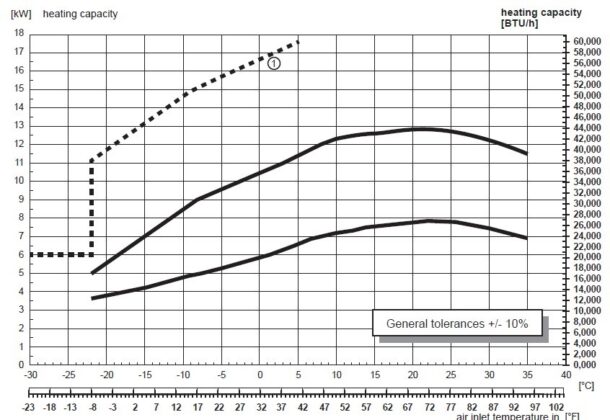
Taco System M, air to water heat pump, heat pumps, heat pump technology, electrification, heating and cooling, plumbing HVAC
John: As you can see from this output chart for the Taco System M, as the outdoor temperature drops, so does the heat pump’s ability to produce BTUs for heating…
Dave: Uhhh, boss . . .
John: It drops off pretty sharply, as you can clearly see from this chart I’m showing you. When you hit 0o F, the output of the heat pump unit itself is about 21,000 BTUH . . .
Dave: Boss . . .
John: And when it hits its low limit of -7o F, its output is only around 17,000. It’s right there, plain as day.
Dave: Boss . . .
John: WHAT?!
Dave: It’s radio, they can’t see the chart.
John: Oh, right. Sorry. Anyway, that’s the case with any air-source heat pump. That’s why System M also includes a 6kW immersion heater in the buffer tank in its companion indoor unit, the HydroBox. That heater adds another 20,478 worth of potential output to the unit, for a total of just under 38,000 at -7o F.
And don’t fret about the immersion heater coming on willy-nilly. It’s intelligently controlled.
Dave: Willy-nilly?
John: It’s an industry term. Who’s our next caller?
Dave: We have Kyle on the line from the alliterative metropolis of Saskatoon, Saskatchewan.
Caller: Greetings, eh? It can get pretty frosty up here in Saskatoon. Can we hook up some backup heat for when it hits 40 below?
John: Gotta tell ya, my favorite Guess Who song ever is “Runnin’ Back to Saskatoon.” I love how it mentions all those great Saskatchewan towns, like Red Deer, Hanna and Medicine Hat.
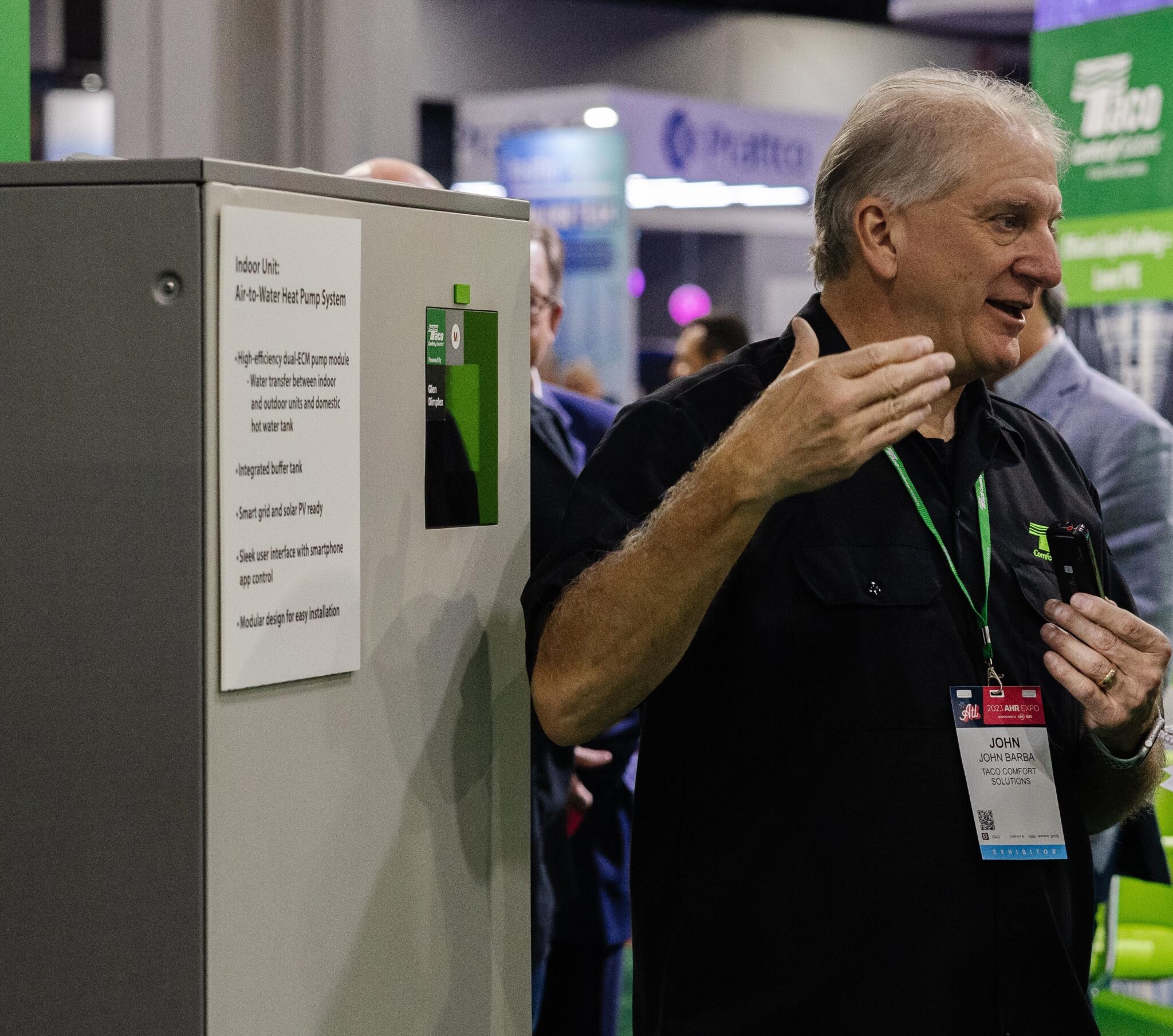
John Barba
Caller: Uh, those towns’re in Alberta. Maybe I could talk to Dave instead?
Dave: I got ya, Kyle. It’s very easy to incorporate a backup or auxiliary heat source with an air-to-water heat pump. If the heat produced by the 37,000-plus BTUH System M at -7o F isn’t enough to heat the home, you can have the auxiliary heat come on at -8. Or, let’s say the heat pump/immersion heater combo comfortably heats a home at 10oF above with a total output of 46,000 BTUH, but it can’t take care of the load once it gets colder than 10oF. Then you can set up an auxiliary heat source – like a gas-fired mod-con – or, if the area isn’t allowing any new fossil fuel burning equipment, an electric boiler could meet that need. It’s actually a simple, single pole-double throw switch activated by outdoor temperature. It turns the heat pump off and turns the boiler on.
John: Great answer Dave. That’s exactly what I was going to say.
Dave: Yeah, but you were still runnin’ back to Saskatoon like the McKenzie Brothers. Let’s go to our next caller, Eric in Minnesota. Go ahead Eric:
Caller: (silence)
John: Eric, what’s your question?
Caller: (silence)
Dave: Welp, Eric’s not here. Let’s move on to Pete from Colorado. What’s up, Pete?
Caller: Hi guys. Long time listener, first time caller. Simple question: how does an air-to-water heat pump switch from heating to cooling?
John: Excellent question Pete. There are lots of ways to do it, ranging from a manual switch combined with turning a bunch of valves on and off, to a simpler, control-based solution.
Dave: That’s right, Boss. An integrated control, like the one with the Taco’s System M, uses an outdoor sensor. Based on the type of home, the climate and the level of insulation in the house, you can program an outdoor temperature at which the system goes into heating mode. Let’s say it’s 53 degrees. You can also program in the temperature at which the system goes into cooling mode. Let’s say that’s 63 degrees.
John: Remember gang, these are just examples. But Dave, if you go into heating mode at 53 oF and cooling mode at 63 oF, wouldn’t that leave a sizable dead band between the two?
Dave: Right you are, Sunshine. In that dead band, System M doesn’t do anything except maybe make domestic hot water if you need it to. If you need cooling and it’s 62 or 63 degrees, you can cool with the reserve of chilled water in the buffer tank. By the same token, if you need heating when it’s 54 or 55 degrees, you’ll have heated water in the buffer tank.
And if you have a houseful of people over for a spring holiday and you’re in the dead band, you can go into a forced cooling mode if you want to.
John: Awesomeness! We have two callers on the line now Dave, and both have the same question. Drake from Idaho and Tom from New Hampshire both want to know how an air-to-water heat pump can make domestic hot water when the heat pump itself is in cooling mode.
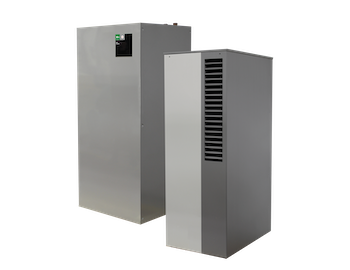 Caller: Yeah, this is Drake. I’m with that Tom guy. It doesn’t make sense that an air-to-water heat pump can make heated water for the indirect hot water tank and chilled water for cooling at the same time.
Caller: Yeah, this is Drake. I’m with that Tom guy. It doesn’t make sense that an air-to-water heat pump can make heated water for the indirect hot water tank and chilled water for cooling at the same time.
Dave: Great observations guys, and you’re correct. An air-to-water heat pump can’t make heated and chilled water at the same time.
Caller: Yeah, this is Tom. That Drake fellah is wicked smaht to ask that question. How can you make the watah hawtt when the freakin’ heat pump is making cold?
Dave: That’s where a buffer tank becomes really important. Let’s say the heat pump is in cooling made. With System M you’ll have a 30 gallon buffer tank filled with chilled water. When the indirect domestic water heater calls to make more hot water, the heat pump immediately jumps into heating mode.
Since you want to make hot water as quickly as you can, you can’t really wait for the 30 gallons of chilled water to be used up. And we don’t want the heat pump to turn all that chilled water into hot water. It would take forever and it’s not exactly what you’d call “green.”
John: Right you are, Dave. That’s where the piping in the System M indoor unit – what we lovingly refer to as the “HydroBox” – comes in. The piping arrangement in the HydroBox is called – are you ready? – a dual differential pressureless manifold. Its job is to hydraulically separate the heating and cooling piping circuits from the buffer tank-heat pump piping circuits. In addition, it also isolates the indirect DHW tank piping from both the heating and cooling circuits.
Dave: Exactamundo, my man. So when the indirect calls to make DHW, the heat pump itself goes right into heating mode, and the hot water from the heat pump bypasses the buffer tank altogether and goes direct to the indirect. The cooling circuit, meanwhile, can still run using the 30 gallons of chilled water that’s still in the buffer tank.
Caller: But won’t that water heat up quickly?
John: It’ll heat up over time, which means two things. First, the best applications for air-to-water heat pumps are very well insulated homes (think steroidal insulation) that don’t heat up or cool down quickly. That buys you time.
Dave: Additionally, you can program the unit to regenerate the hot water tank at specific times. Maybe the best time to do it during cooling season is at night when you’re asleep. You’ll be less likely to notice any temperature creep.
John: Wow, will you look at that. The old clock on the wall says time is up for this week’s edition of Everything You Always Wanted to Know About Heat Pumps* (*But Were Afraid to Ask). Thanks for being with us.
Dave: And if you enjoyed this show, make sure to join John and myself online during the spring and summer on Taco After Dark, our weekly nighttime program dedicated to all things hydronic, plumbing and heat pumps.
The fun starts once the sun goes down!
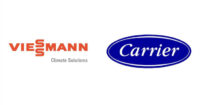
Viessmann and Carrier align; Uponor rebuffs Aliaxis. Are we seeing a renewed “trend” toward consolidation in the PHVAC industy? Inflation, fuel prices, war, supply chain, electrification, and economy woes are all factors for potential wholesale changes. Over the past month, there has been heavy movement in the industry to suggest such a thing. In a Read more
Viessmann and Carrier align; Uponor rebuffs Aliaxis.
Are we seeing a renewed “trend” toward consolidation in the PHVAC industy? Inflation, fuel prices, war, supply chain, electrification, and economy woes are all factors for potential wholesale changes. Over the past month, there has been heavy movement in the industry to suggest such a thing. In a week that saw big movement, we learned recently that two major players in the PHVAC industry have been active in talks.
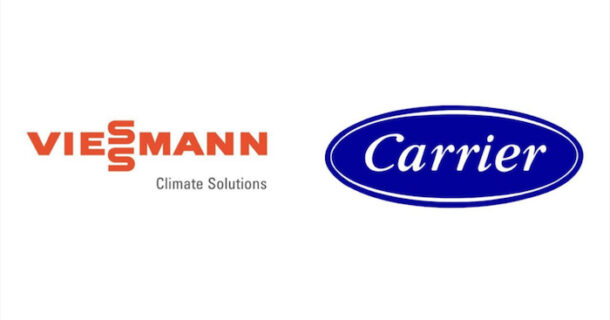
The first, just officially confirmed, Carrier will acquire Viessmann Climate Solutions, the largest segment of Viessmann Group, in a cash and stock transaction valued at €12 billion, subject to working capital and other adjustments. According to the release, Viessmann Climate Solutions provides Carrier with an iconic, premium brand in the highest growth segment of the global heat pump and energy transition markets. In addition, Carrier announced plans to exit its Fire & Security and Commercial Refrigeration cabinet businesses.
“The acquisition of Viessmann Climate Solutions is a game-changing opportunity,” said Carrier Chairman & CEO David Gitlin. “Climate change, sustainability requirements and geopolitical factors are driving an unprecedented energy transition in Europe. Accelerated by government regulations and incentives, the transition creates a significant, long-term growth opportunity.
“Viessmann Climate Solutions is uniquely positioned to capitalize on this opportunity with its premier brand, highly differentiated distribution channel and innovative product offerings. With 70% of its business consisting of heat pumps and related accessories, solar PV, batteries and services, Viessmann Climate Solutions is a critical leader in Europe’s energy transition. We look forward to welcoming its 11,000 team members to the Carrier family and Max Viessmann, CEO of Viessmann to the Carrier Board of Directors at closing, which is expected around the end of 2023.
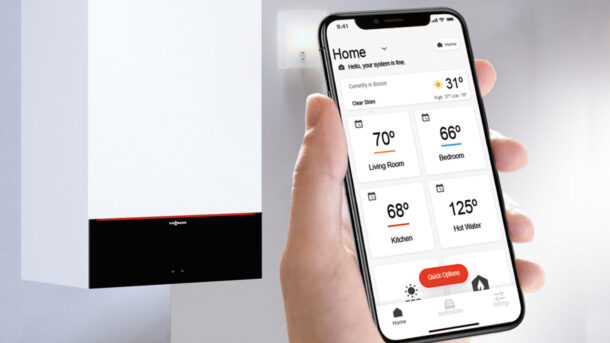
But a recent announcement from Viessmann found on LinkedIn read, “the new transatlantic partnership underlines the importance of international, cross-border collaboration in the fight against global climate change. Both companies are fully committed to take more responsibility for a sustainable energy transition in the building sector, focusing on our purposes: Viessmann Group’s purpose is to co-create living spaces for generations to come. Carrier’s vision is to create solutions that matter for people and our planet. We both regard the climate goals in North America and Europe as a once-in-a-century opportunity to make a positive impact, by actively shaping sustainable climate and energy solutions for future generations.
“The Viessmann Group will continue to remain an independent family business in full ownership of the Viessmann entrepreneurial family. Today, the Viessmann Group—excluding its Climate Solutions business area—generates a total revenue of EUR 1 billion in sales—including non-consolidated entities—with around 4,000 employees. Looking ahead, the clear goal and ambition of the Viessmann Group is to grow to a size that is larger than the Climate Solutions business area today, latest by the end of the decade.”

How does this affect contractors? The Hub’s Eric Aune, who is an ardent Viessmann installer, was sent this message: By combining Viessmann Climate Solutions and Carrier, we are co-creating one of the leading climate solutions companies in the world. Through the combination of both companies, we are forming a resilient, fast-growing innovation leader in a highly competitive market environment. All partners and customers of Viessmann Climate Solutions will significantly benefit from this new partnership:
- Viessmann Climate Solutions’ premium integrated offering will be complemented by electrified products and services from Carrier and its sub brands (heat pumps, battery storages, cooling and ventilation solutions as well as after-sales-services, digital and value-added solutions). This will lead to a wider product range for you.
- Viessmann Climate Solutions will get better access to suppliers via the global network of Carrier, especially its subsidiary Toshiba Carrier Corporation in Asia. This will lead to a faster delivery for you, in the long run. Thereby, you can significantly shorten your time to installation completion—a decisive component for the decarbonization of the building stock both in Europe and beyond.
- The iconic brand of Viessmann will be continued. All your respective contact persons at Viessmann will remain in charge. The Climate Solutions Executive Board and leadership team of Viessmann Climate Solutions, led by CEO Thomas Heim will continue to run the business. Viessmann Climate Solutions will become a major driver of Carrier’s growth strategy in Europe. Its headquarters will remain in Allendorf, Germany. The Viessmann Group will become one of the largest shareholders in Carrier. Consequently, Viessmann Group CEO Max Viessmann will become a new member of the Board of Directors of Carrier.
Meanwhile, according to an industry insider close to Mechanical Hub, Putin’s iron grip on the fuel supply in Europe could be a contributing factor to sell now. And, will Viessmann alter its path to market? One observer asked, “Will it be through the DCNE wholesale network?” We will see how things shake out in the next few weeks to months.
PEX Power
On the piping side, there have been tremors of a major shake-up in the PEX world. But all for naught, it turns out. Mechanical Hub has learned that Belgian company Aliaxis, a manufacturer of advanced fluid management solutions—with IPEX already a part of the company—had approached Uponor in its interest to sell. According to information acquired by Mechanical Hub, Aliaxis had announced a non-binding intention to make a tender offer to acquire all shares in Uponor.
Finland’s Uponor said on Wednesday (4/26/23), it rejected an unsolicited offer from Belgian rival Aliaxis, adding that the suggested price of 25 euros per share did not reflect the company’s value and long-term prospects.
According to Reuters and from sources within Uponor, the company’s board unanimously rejected the offer, but said it would consider any further proposals made by Aliaxis or any other party, if it was in the best interest of its shareholders.
Aliaxis last Monday made a $2 billion unsolicited offer to buy Uponor, seeking to form a global water management group, and the following Monday raised its stake in the Finnish company to 10.6%.
Oras Invest, Uponor’s largest shareholder with about 25.7% of the company’s shares, said on the day Aliaxis made its unsolicited offer that it had no intention of accepting it.
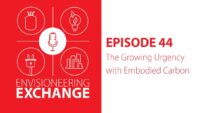
Industry experts in decarbonization and electrification weigh in on heat pump technology Danfoss’ EnVisioneering Exchange podcast series, now in its third season, continues to explore the megatrends shaping our future with a lineup of guests from all facets of the HVACR industry. February’s episodes feature discussions on heat pumps, their role in decarbonization and how Read more
Industry experts in decarbonization and electrification weigh in on heat pump technology
Danfoss’ EnVisioneering Exchange podcast series, now in its third season, continues to explore the megatrends shaping our future with a lineup of guests from all facets of the HVACR industry. February’s episodes feature discussions on heat pumps, their role in decarbonization and how the industry and policymakers can encourage their adoption.
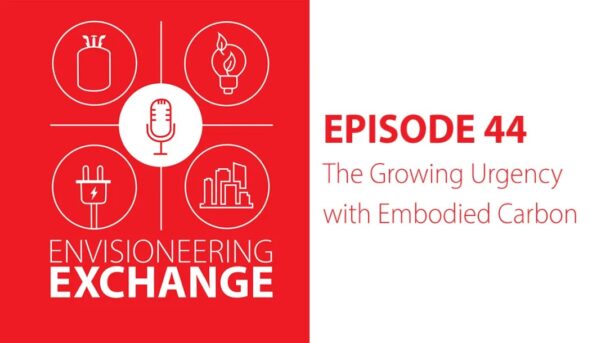
In “The Role of Heat Pumps in Decarbonization,” released on February 2, Steve Nadel, executive director of American Council on an Energy-Efficient Economy (ACEEE), discusses the barriers to heat pump adoption, particularly in buildings. He emphasizes the importance of educating both consumers and contractors on the value of heat pumps and financial incentives for building owners, as well as the need for new technologies that increase heat pump effectiveness in colder climates.
In “Clearing the Hurdles to Heat Pump Adoption,” released on February 20, Ron Domitrovic, program manager for the Electric Power Research Institute (EPRI), addresses some of the heat pump technologies on the horizon and what policies are needed to increase adoption. He notes that variable-speed heat pumps, powered by variable-speed compressors, have helped make heat pumps more effective and efficient in colder climates, but the technology needs to continue to evolve to make it cost-effective to retrofit existing buildings with heat pump systems. Increasing adoptions also requires educating contractors and suppliers on the benefits of heat pumps and options for installation.
All EnVisioneering Exchange podcasts can be accessed on SoundCloud and Danfoss’ EnVisioneering Solutions blog, and are posted on Danfoss LinkedIn and Twitter.
